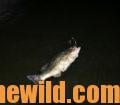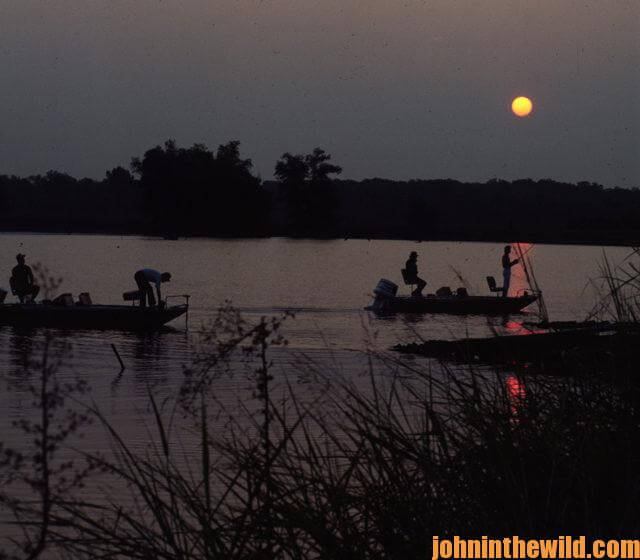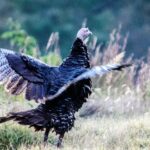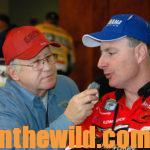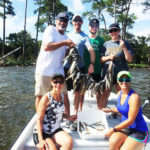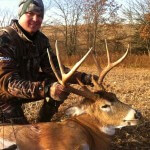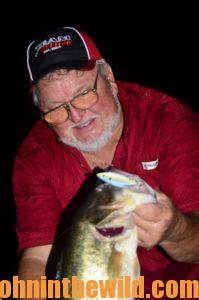 Editor’s Note: Even a dog knows to get out of the sun when the temperature is 90+ degrees, and many bass anglers across the nation have discovered that bassing is more productive after dark on most rivers and lakes in the summertime.
Editor’s Note: Even a dog knows to get out of the sun when the temperature is 90+ degrees, and many bass anglers across the nation have discovered that bassing is more productive after dark on most rivers and lakes in the summertime.
Phillip Criss of Albertville, Alabama, guides bass fishermen on Lake Guntersville, 150 to 175 days every year and fishes about 100 more days when he’s not guiding. Guntersville is ranked the No. 2 big-bass lake in the U.S. Criss often fishes at night for bass for his own recreation but doesn’t guide at night due to the liability. “The best night fishing for bass on Guntersville usually starts during the month of May and continues until the end of September. Guntersville’s night fishing is so productive because: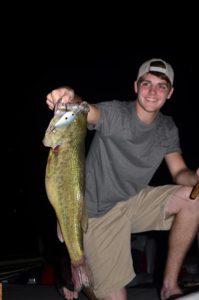
* “most of the fishing, boat riding and jet ski pressure ends when the sun goes down;
* “bass will feed actively at night – often in places you can’t catch them in the daytime;
* “the weather is cooler;
* “you can spend more time fishing and less time running your big engine at night;
* “no one generally will be fishing a productive bass location at night, especially between the hours of 10:00 pm and 3:00 am; and
* “no one will see where you’ve caught a big bass, or how you’ve caught it and then move into your spot and catch one for yourself.”
Where to Fish:
 Some of the most-popular night-fishing places are the bridges and causeways with riprap with numbers of street and dock lights. The road beds that cross the river can provide some productive big-bass fishing late at night and early in the morning. However, Criss prefers to get away from those areas and instead fish hard-bottom underwater river points, especially the grassy sites when current’s being pulled through the lake. Current helps stage bass in areas where they can attack bait.
Some of the most-popular night-fishing places are the bridges and causeways with riprap with numbers of street and dock lights. The road beds that cross the river can provide some productive big-bass fishing late at night and early in the morning. However, Criss prefers to get away from those areas and instead fish hard-bottom underwater river points, especially the grassy sites when current’s being pulled through the lake. Current helps stage bass in areas where they can attack bait.
According to Criss, “I like to fish on a night with little or no moon, but you still can catch bass at night under almost any of the moon phases. Your three best lures for night fishing for bass are a single-bladed spinner bait, a jig and a plastic worm. Your most-productive colors of lures for the spinner bait and the jig will be black, black-and-blue or black-and-red. When fishing the worm, I prefer a solid black. If I’m fishing the spinner bait, I’ll target the creek mouths and the shallow points where I seem to catch more bass than I do on the flats, especially if a current’s moving. If no current is moving, I’ll fish farther toward the back ends of creeks and around boathouses. Some of the better areas to fish with no current are the marinas.
“People who have boats in marinas often don’t want fishermen to throw baits up against their boats and bang around in those marinas at night. Many people live on their boats in marinas.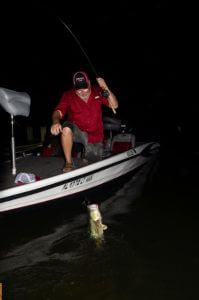
So, my favorite lure for fishing marinas is a black or a black-and-blue Yamamoto Senko (http://yamamoto.baits.com/) soft-plastic worm that’s rigged weedless with a tail spinner that you can cast around the docks and skip it between the boats and the docks without making any noise. One of the reasons a weightless Senko with a tail spinner produces bass at night in a marina is because a marina has numbers of lights. I think that the tail spinner reflects the light as it falls, gives the Senko some motion and seems to attract bass. I use a Yum Dinger (https://www.yumbaits.com/yum-dinger-fishing-lure) tail spinner that you screw into the end of the Senko. You can get willow leaf blades or Colorado blades. I like the Colorado blade for night fishing. If the water’s clear at Guntersville, I’ll fish a silver blade. But if the water’s colored, I like a gold blade.
“I Texas rig the Senko backwards from the way most people do who put the hook in the big end (head) of the Senko. But I place my hook in the smaller end (tail) of the Senko and screw the tail spinner into the Senko’s heavy end. Then when you pull the lure forward and give it a slack line, the Senko will swim backwards, allowing the lure to swim under the docks and the boats where the bass are most likely holding. You have to let the Senko fall 2-3 feet on a completely-slack line to make this tactic work. With the Senko on that slack line, more than likely, you won’t feel the bite. So, I use fluorescent 14-pound-test monofilament Trilene (http://www.berkley-fishing.com/berkley-line-monofilament-berkley-trilene/trilene-xl/1285555.html) XL line to see the strike on the line, although I can’t feel the strike on my rod. The bass generally will hit the Senko hard, and I’ll take up the slack in my line and set the hook.”
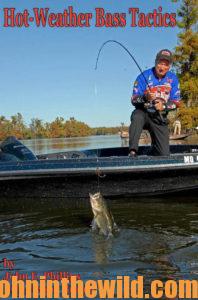 To contact Phillip Criss, call 205-461-5549
To contact Phillip Criss, call 205-461-5549
To learn more about catching bass, check out John E. Phillips’ book, “Hot Weather Bass Tactics” at http://amzn.to/11HFpUc, available in Kindle version.
Tomorrow: More Places and Ways to Fish for Hot Weather Bass in Lakes with Phillip Criss

